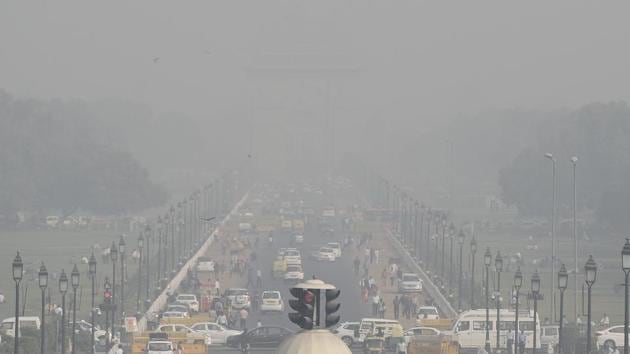Finer, deadlier PM1 shoots up in Delhi due to crop burning, crackers
PM1, or particulate matter measuring less than 1 micron, is so fine that it can reach the blood stream and organs. Scientists say these particles are highly toxic as they are formed because of complex chemical reactions between pollutants in the air, and are at least 50-70 times finer than human hair.
Even as Delhi’s annual winter pollution crisis has made residents aware of the harmful PM10 and the dangerous PM2.5 particulate matter, the tiniest and deadliest of these pollutants, PM1, shot up at least 12 times this November than what it is on the cleanest monsoon days, according to scientists monitoring air quality in the national capital.

PM1, or particulate matter measuring less than 1 micron, is so fine that it can reach the blood stream and organs. Scientists say these particles are highly toxic as they are formed because of complex chemical reactions between pollutants in the air, and are at least 50-70 times finer than human hair.
In comparison, PM10 is around 5-7 times finer than hair, and PM2.5 is around 20-30 times finer. PM10 can reach up to the upper air passage of the human body, and PM2.5 can reach the lungs.
The concentration of PM1 peaked in the city on November 8, the day after Diwali, and on November 5, when smoke from stubble burning in Punjab and Haryana pushed levels of particulate matter in the air up to the emergency zone, according to data collected by Safar, which is one of the Union government’s official pollution forecasting systems. In Delhi, of the 36 monitoring stations, 11 are run by Safar and only two of them measure the concentration of PM1 particulate matter.
“On November 5, the PM1 concentration shot up to 126µg/m3. On November 8, it was at 121µg/m3. The concentration of PM1 was recorded at 10.02µg/m3 on July 27 when the air was clean because of the monsoons,” said a scientist from Safar who asked not to be named.
Unlike other particulate matter — PM2.5 and PM10 — which have set permissible limits, there is still no global safe limit for PM1 because it has started being measured only recently.
But experts suggested the PM1 levels on July 27 (10µg/m3) could be considered “safe” because Delhi’s Air Quality Index (AQI) reading on the day was very close to the ‘good’ category at 54. The levels of PM2.5 and PM10 were both within their permissible limits of 60µg/m3 and 100µg/m3 on the day.
“The concentration of PM1 was higher on November 5, the day when Delhi’s pollution level shot up because of stubble burning, as compared to the day after Diwali, when fumes from crackers had pushed up pollution,” the Safar scientist quoted above said.
Experts said the trend is worrying. “PM1 is among the finest particles known. They may be more injurious to health than PM10 and PM2.5 because of the probability of their greater penetration into the blood stream. They are widely distributed in the different organs of the human body, causing likely harm,” TK Joshi, environmental health advisor to the union environment and forest ministry, said.
“PM1 particulate matter is highly toxic. These particles are not just emitted when there is any combustion, but also result from complex chemical reactions that take place between toxic elements in the air, popularly known as secondary particles,” said Mukesh Khare, professor, environmental engineering, IIT-Delhi, and an EPCA member.






